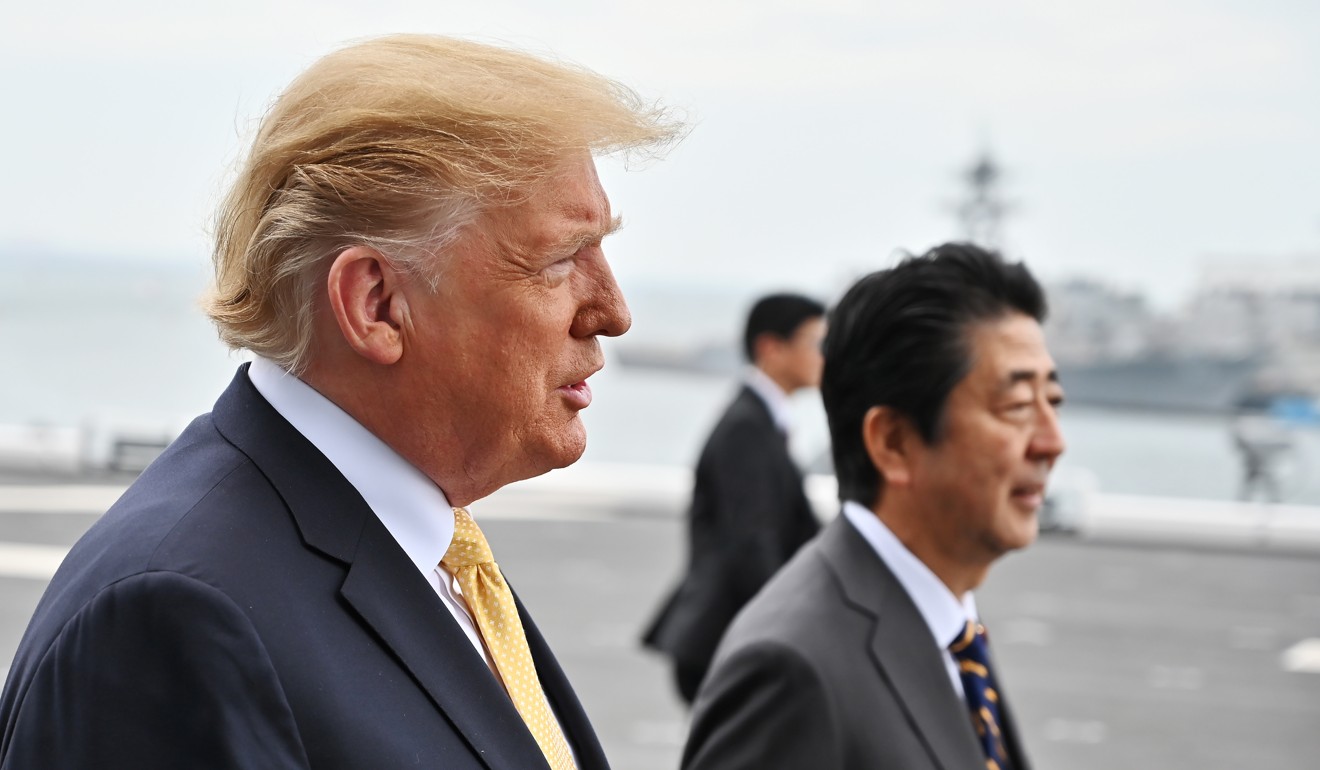
Japanese Prime Minister Shinzo Abe meets Iranian leadership, tries to ease tensions with United States
- Abe’s two-day visit was the first trip to the country by a Japanese prime minister in over four decades
- It has been seen as an attempt to boost Tokyo’s diplomatic profile abroad, and smooth ruffled feathers in the region
“I do not see Trump worthy of any message exchange, and I do not have any reply for him now or in future,” Fars news agency quoted Khamenei as saying.
Khamenei also said Trump’s promise not to seek regime change in Iran was “a lie”, adding that he did not believe Washington’s offer of “honest negotiations” with Tehran.

After meeting Khamanei, Abe said the leader, who has taken a more hardline approach towards the United States than Iranian President Hassan Rowhani, promised his country has “no intention to produce, possess or use nuclear weapons”.
“I met face-to-face with Iran’s Supreme Leader Khamenei and I was able to hear his belief in peace,” Abe told reporters in Tehran. “It is a major step forward toward securing peace and stability in this region.”
China, Iran to forge closer ties due to common threat from United States
While Japan and Iran have long enjoyed amicable ties, Abe is the first Japanese prime minister to have met the Iranian supreme leader, who has ultimate authority over the country’s policy direction. Rowhani is considered more moderate and reached a landmark nuclear deal with the US and other world powers in 2015.
Abe told Khamenei during their roughly 50-minute meeting that Japan supports the nuclear deal, expressing hope that Iran will abide by its commitments, according to a senior Japanese government official.
Abe visited Tehran in an attempt to serve as a mediator between Iran and the US, Japan’s long-time security ally, with tensions having flared in recent weeks and worries growing about accidental military clashes in the Middle East, a vital area for energy-poor Japan.

Abe said he shared Trump’s thinking with Khamenei, adding it was important both leaders seek peace.
Abe’s trip, the first by a Japanese leader to Iran since the country’s Islamic Revolution in 1979, was seen as an attempt to boost Tokyo’s diplomatic profile abroad.
During his talks with Abe on Wednesday, Rowhani indicated Iran does not want a further escalation of the situation in the Middle East or war with the US. But the president blamed the US, and in particular what he described as the “economic war” Washington has launched against Tehran, for the heightened regional tensions.
Rowhani called for the lifting of oil sanctions by the US and asked Abe to tell Trump of its demand, an Iranian government source said.
Opinion: Trump’s economic sanctions on Iran are doomed to fail
The last Japanese prime minister to visit Iran was Takeo Fukuda in 1978. Tokyo’s ties with Tehran date back to 1929, with this year marking the 90th anniversary of the start of their diplomatic relationship.
Since Abe returned to office in 2012, he has met Rowhani eight times. The Japanese leader told a joint press briefing on Wednesday that he hopes to meet the Iranian president again “soon” but did not elaborate.

As Abe wrapped up his two-day visit to Iran, news broke that two oil tankers – one operated by a Japanese company – had been targeted near the Strait of Hormuz.
All 21 Filipino crew members of the Japan-operated ship, the Kokuka Courageous, escaped in life rafts bound for the United Arab Emirates, according to the ship’s operator, Kokuka Sangyo Co.
The ship was sailing in the Gulf of Oman near the UAE emirate of Fujairah en route to Thailand and Singapore from Saudi Arabia, according to Kokuka Sangyo. Tokyo-based Mitsubishi Gas Chemical Co. said it was carrying methanol.
The other ship, Front Altair, was chartered by Taiwanese oil refiner CPC Corp to carry fuel from the Middle East to southern Taiwan, according to Chen Ming-hui, company vice-president.
“The vessel was engulfed in flames but all crew members are safe,” Chen said.
Additional reporting by Kyodo


